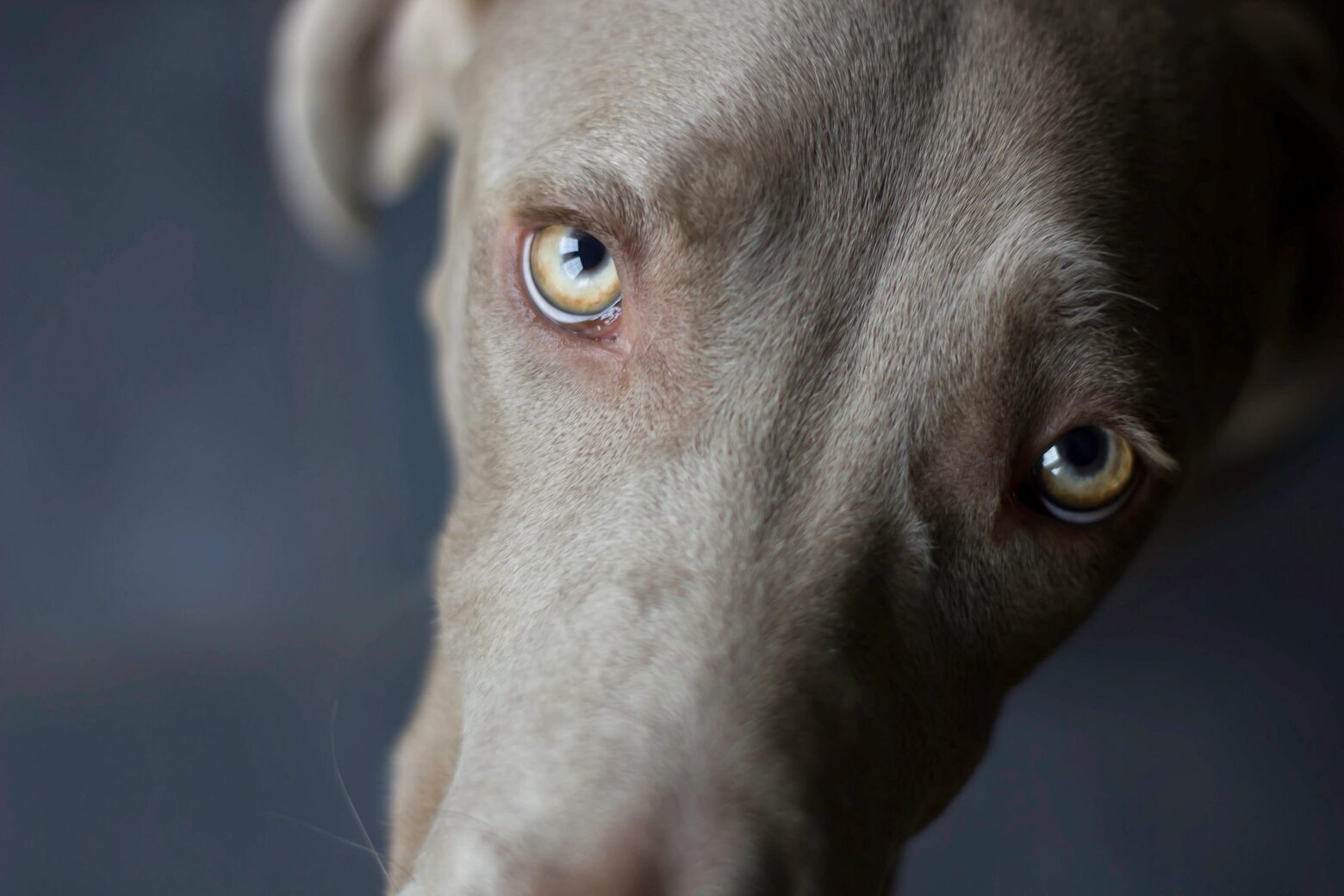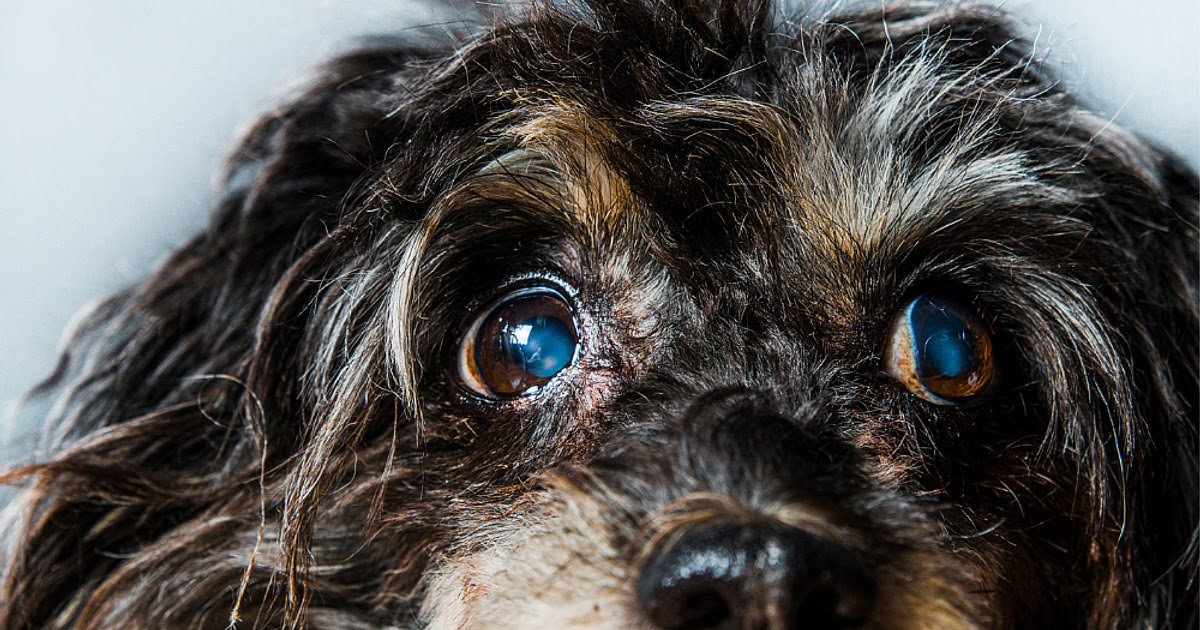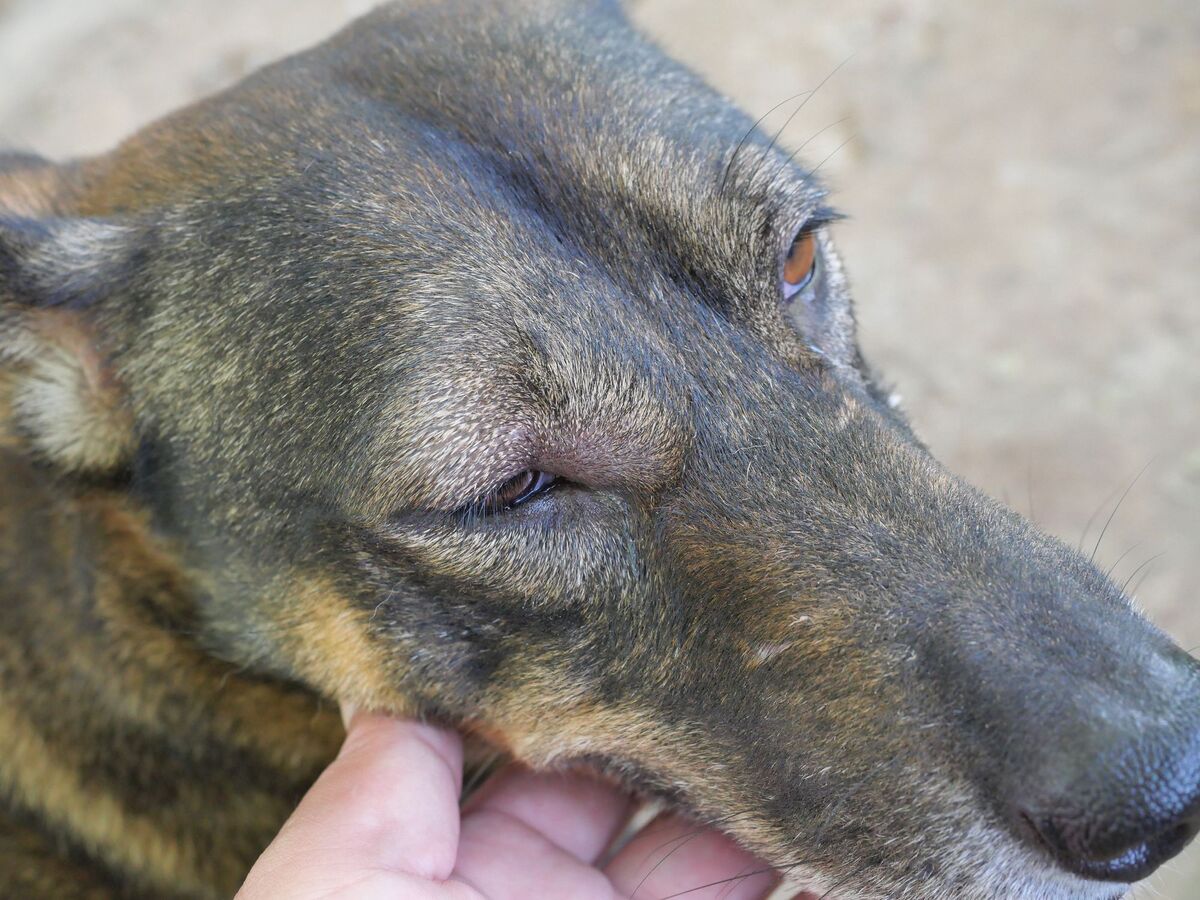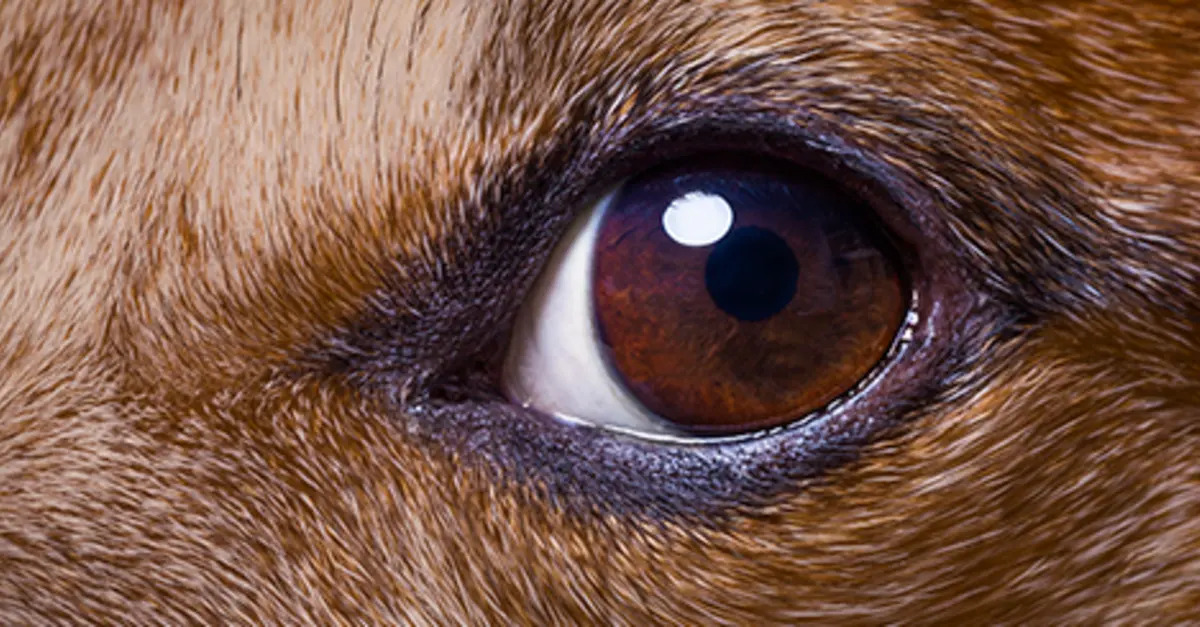Home>Health & Wellness>Common Health Issues>Eye and Ear Health>What Does Dog Whale Eye Mean?


Eye and Ear Health
What Does Dog Whale Eye Mean?
Published: February 11, 2024
Learn about the significance of dog whale eye behavior and how it relates to eye and ear health. Understand the signs and symptoms to ensure your pet's well-being.
(Many of the links in this article redirect to a specific reviewed product. Your purchase of these products through affiliate links helps to generate commission for Pawsomeoldies.com, at no extra cost. Learn more)
Table of Contents
Introduction
The term "dog whale eye" may sound peculiar, but it holds significant importance in the realm of canine health. This phenomenon refers to a specific eye expression observed in dogs, often indicative of underlying emotions or potential health issues. Understanding dog whale eye is crucial for pet owners and enthusiasts, as it can serve as a valuable communication tool between humans and their furry companions.
In the following sections, we will delve into the intricacies of dog whale eye, exploring its causes, signs, and potential remedies. By shedding light on this topic, we aim to equip readers with the knowledge necessary to recognize and address this aspect of canine behavior and health effectively. Let's embark on this enlightening journey to unravel the mysteries of dog whale eye and gain a deeper understanding of our canine friends.
Understanding Dog Whale Eye
The term "dog whale eye" refers to a specific eye expression observed in dogs, characterized by the whites of the eyes being prominently visible. This phenomenon is also known as "half-moon eye" due to the crescent-shaped appearance of the exposed sclera. When a dog exhibits whale eye, it typically indicates feelings of fear, anxiety, or stress. This distinctive eye expression is a crucial aspect of canine body language, serving as a non-verbal communication tool between dogs and their human companions.
The whale eye expression is often observed when a dog is feeling threatened or uncomfortable in a particular situation. It is commonly associated with instances where a dog feels cornered, intimidated, or fearful. The dog's attempt to avert its gaze while keeping an eye on the perceived threat results in the whites of the eyes becoming prominently visible, creating the characteristic whale eye appearance.
Understanding dog whale eye is essential for pet owners and individuals interacting with dogs, as it provides valuable insights into a dog's emotional state. By recognizing and interpreting this eye expression, humans can better comprehend a dog's feelings and respond appropriately to alleviate any distress or discomfort the dog may be experiencing.
In addition to emotional cues, dog whale eye can also be an indicator of potential health issues affecting the eyes or overall well-being of the dog. It is crucial for pet owners to differentiate between natural expressions of fear or anxiety and any underlying medical conditions that may be contributing to the whale eye appearance.
By gaining a deeper understanding of dog whale eye, individuals can foster stronger bonds with their canine companions and provide the necessary support and reassurance when their dogs exhibit this distinctive eye expression. Recognizing the significance of whale eye in canine communication enables pet owners to create a safe and nurturing environment for their dogs, promoting trust and emotional well-being within the human-dog relationship.
Causes of Dog Whale Eye
The whale eye expression in dogs can be attributed to various causes, encompassing both emotional and physiological factors. Understanding these underlying causes is pivotal in deciphering a dog's behavior and addressing any potential issues effectively.
Emotional Distress
One of the primary causes of dog whale eye is emotional distress, particularly feelings of fear, anxiety, or stress. Dogs may exhibit the whale eye expression when they perceive a threat or feel uncomfortable in a given situation. This could occur in response to unfamiliar environments, loud noises, aggressive body language from humans or other animals, or perceived threats to their territory. The whale eye serves as a visual indicator of the dog's emotional state, signaling distress and the need for reassurance or a change in the environment to alleviate the perceived threat.
Medical Conditions
In some cases, the whale eye expression in dogs may be linked to underlying medical conditions affecting their eyes or overall well-being. Ocular issues such as corneal ulcers, glaucoma, or other forms of eye discomfort can lead to dogs displaying the characteristic whale eye appearance. Additionally, systemic health problems, including pain or discomfort in other parts of the body, can manifest as stress or anxiety, contributing to the prevalence of whale eye in dogs.
Behavioral Triggers
Certain behavioral triggers can elicit the whale eye expression in dogs. For instance, instances of dominance or aggression from other dogs or humans can prompt a dog to exhibit whale eye as a defensive response. Dogs may also display the whale eye when they feel cornered or restrained, signaling their discomfort and the need for space or a less threatening environment.
Past Trauma
Dogs with a history of trauma or negative experiences may be more prone to exhibiting the whale eye expression. Past mistreatment, abuse, or traumatic events can leave a lasting impact on a dog's emotional well-being, leading to heightened anxiety and a propensity to display the whale eye as a coping mechanism in stressful situations.
By recognizing the diverse causes of dog whale eye, pet owners and individuals interacting with dogs can gain valuable insights into a dog's emotional and physical well-being. This understanding enables proactive measures to address the root causes of whale eye, fostering a supportive and nurturing environment for canine companions.
Signs of Dog Whale Eye
The signs of dog whale eye are unmistakable once you know what to look for. When a dog exhibits the whale eye expression, the whites of their eyes become prominently visible, creating a crescent-shaped appearance. This distinctive eye expression is often accompanied by other body language cues that collectively convey the dog's emotional state and level of distress.
In addition to the prominent whites of the eyes, dogs displaying the whale eye expression may also exhibit the following signs:
-
Averting Gaze: Dogs with whale eye tend to avert their gaze while keeping the whites of their eyes visible. This behavior is a defensive response, indicating the dog's attempt to monitor a perceived threat while avoiding direct eye contact.
-
Tense Body Language: The whale eye expression is often accompanied by tense body language, including stiff posture, raised hackles, or a lowered head. These physical cues signify the dog's heightened state of alertness and potential discomfort.
-
Dilated Pupils: In conjunction with the whale eye expression, dogs may display dilated pupils, reflecting their heightened arousal and emotional distress. Dilated pupils are indicative of the dog's physiological response to perceived threats or stressors.
-
Freezing or Avoidance: Dogs exhibiting whale eye may freeze in place or attempt to avoid the source of their distress. This behavior reflects the dog's attempt to cope with the perceived threat by minimizing movement and seeking distance from the perceived stressor.
-
Yawning or Lip Licking: As a form of appeasement behavior, dogs may exhibit excessive yawning or lip licking when displaying the whale eye expression. These subtle signals convey the dog's attempt to diffuse tension and communicate their discomfort.
Recognizing these signs is crucial for pet owners and individuals interacting with dogs, as it enables them to identify when a dog is experiencing fear, anxiety, or stress. By understanding the comprehensive range of cues associated with the whale eye expression, humans can respond appropriately to alleviate the dog's distress and create a supportive environment conducive to the dog's emotional well-being.
Understanding the signs of dog whale eye empowers individuals to interpret a dog's body language accurately, fostering stronger bonds and effective communication between humans and their canine companions. By acknowledging and addressing the signs of whale eye, pet owners can provide the necessary support and reassurance to ensure their dogs feel safe and secure in various environments.
How to Address Dog Whale Eye
Addressing dog whale eye requires a compassionate and proactive approach aimed at understanding the underlying causes of the dog's distress and implementing strategies to alleviate their emotional discomfort. By recognizing the significance of the whale eye expression and its associated signs, pet owners and individuals interacting with dogs can effectively support their canine companions in moments of fear, anxiety, or stress.
Read more: What Does A Dog Making Eye Contact Mean
Creating a Safe Environment
One of the fundamental steps in addressing dog whale eye is to create a safe and reassuring environment for the dog. This involves identifying and minimizing potential stressors or triggers that may be contributing to the dog's distress. By providing a calm and secure space, free from intimidating stimuli or threatening interactions, pet owners can help alleviate the dog's anxiety and reduce the prevalence of whale eye.
Positive Reinforcement and Comforting Techniques
Utilizing positive reinforcement and comforting techniques can significantly aid in addressing dog whale eye. Offering verbal praise, gentle petting, and soothing tones can reassure the dog and alleviate their emotional distress. Additionally, providing familiar toys, blankets, or other comforting items can offer a sense of security to the dog, helping them cope with their anxiety and reduce the display of whale eye.
Professional Guidance and Training
Seeking professional guidance from veterinarians, certified dog behaviorists, or trainers can be instrumental in addressing dog whale eye. These experts can assess the underlying causes of the dog's distress, provide tailored behavioral interventions, and offer training strategies to help the dog build confidence and resilience in anxiety-inducing situations. Professional guidance ensures a comprehensive approach to addressing whale eye and promoting the dog's emotional well-being.
Exercise and Mental Stimulation
Regular exercise and mental stimulation play a crucial role in addressing dog whale eye by promoting overall well-being and reducing anxiety. Engaging the dog in physical activities, interactive play, and mental enrichment exercises can help alleviate stress and provide a healthy outlet for their energy. A well-exercised and mentally stimulated dog is less likely to exhibit signs of distress, including the whale eye expression.
Ongoing Observation and Support
Consistent observation and support are essential in addressing dog whale eye. By remaining attentive to the dog's body language and emotional cues, pet owners can intervene promptly when signs of distress, including whale eye, are observed. Providing ongoing support, patience, and understanding reinforces the dog's trust and strengthens the human-canine bond, contributing to the dog's emotional resilience and well-being.
By implementing these proactive measures and demonstrating empathy towards dogs displaying whale eye, pet owners and individuals interacting with dogs can effectively address the dog's emotional distress and create a supportive environment conducive to their well-being. Understanding the multifaceted approach to addressing dog whale eye empowers individuals to provide the necessary care and support for their canine companions, fostering a harmonious and emotionally nurturing relationship.
Conclusion
In conclusion, the phenomenon of dog whale eye serves as a poignant reminder of the intricate ways in which dogs communicate their emotions and distress. Understanding the significance of whale eye in canine body language is pivotal for pet owners and individuals interacting with dogs, as it provides valuable insights into a dog's emotional state and potential health concerns. By recognizing and interpreting the whale eye expression, humans can effectively address the underlying causes of a dog's distress and create a supportive environment conducive to the dog's well-being.
The causes of dog whale eye, ranging from emotional distress to potential medical conditions, underscore the complexity of canine behavior and the diverse factors that contribute to this distinctive eye expression. By acknowledging the multifaceted nature of whale eye, pet owners can approach their canine companions' distress with empathy and proactive measures aimed at alleviating anxiety and promoting emotional resilience.
Recognizing the signs of dog whale eye, including the prominent whites of the eyes, aversion of gaze, tense body language, dilated pupils, and appeasement behaviors, empowers individuals to respond appropriately and provide the necessary support and reassurance to dogs in moments of fear or stress. By acknowledging these signs, pet owners can foster stronger bonds with their canine companions and create a safe and nurturing environment that promotes trust and emotional well-being.
Addressing dog whale eye requires a compassionate and proactive approach, encompassing the creation of a safe environment, positive reinforcement, professional guidance, exercise, mental stimulation, and ongoing observation and support. By implementing these strategies, pet owners can effectively address the dog's distress and promote a harmonious and emotionally nurturing relationship with their canine companions.
In essence, dog whale eye serves as a poignant reminder of the depth of canine emotions and the importance of empathetic understanding in human-dog interactions. By embracing this understanding and responding with compassion and proactive measures, individuals can cultivate a supportive and nurturing environment for their dogs, strengthening the bond between humans and their beloved canine companions.












